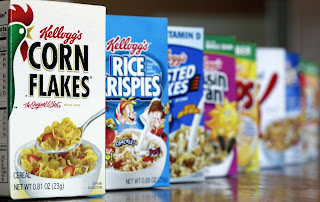OREO- Its launch and Establishment in India
BRAND
STRATEGY IN INDIA:
There
was 17% growth in biscuit category (in India) when Mondelez introduced Oreo.
Since Mondelez was already a leader in chocolate category (Cadbury being one of
its brand portfolio), so now it imposed challenges in Biscuits category also.
The only challenge faced by Mondelez was to enter a market where the three
biscuit category titans- Parle (41%), Britannia (26%) and ITC (8%) acquired
total 75% of total market share. These companies ruled the market for years and
have established a strong household in the market. If we observe closely only 2
brands, Parle-G and Britannia Good Day garnered more than 5% share in pool of
1000 brands. This made nearly impossible task for a new brand to create its
presence in this category in India.
“Cream”
was center of attraction of Oreo biscuits, which was consumed primarily by
households with children so their main focus was on cream. To make their
entrance in the market, they decided to launch their product under the brand of
Cadbury, which was very well diversified in every part of India and they
focused on creating awareness and conducting rapid trials. Following were the
objectives of their launch:
1. Gain
a market share of 1% in the Biscuit category.
2. To build
awareness, 40% repeat purchase and 40% trials in priority markets.
THE
MARKETING MIX IMPERATIVES:
Oreo
launched its chocolate cookie with vanilla cream at Rs 5 per pack with 3
biscuits to drive impulsive purchase and trials, then pack of 7 for 10 Rs and
pack of 14 for 20 Rs for heavy consumption segment. Even though the country
changed but the design of cookie remained same throughout everywhere. To make
Oreo stand out amongst its competitors, the company hosted unique Point of
Purchase (POP) and Counter-Top POP devices in various retail stores. So
basically they created virtual “Wall of Blue” effect in trade channel
emphasizing the brands compelling presence. At the end all investments were
made on increasing on-shelf presence.
Now
talking about advertisement and communication, the company emphasized on
“moments of togetherness” proposition in India. Television was main medium for
spreading this proposition whereas Oreo Facebook page was even created where
fans were added at rapid rate. The brand touch-points used for communication
included TV, packaging, Radio spots, Digital website and social networking
sites. Further advertising activities were conducted such as hoardings, at
airport, billboards etc.
The
company came up a new ritual to bring people together, which was “Twist, Lick
and Dunk”. This became a platform to connect people beyond the product, and
bring joyousness and family bonding. The message was to create:
1. A
ritual of pleasure for children
2. A
ritual of Emotion for parents, which sparks moment of togetherness between
child and parent.
RESULTS:
Oreo
completed its target of 1% market share within 6 months of launch, which was a
great beginning. The brand trials and repeats exceeded targets with 4 months
and its brand awareness beat other cream biscuit brand’s awareness. It was also
listed among the top 30 brands of Facebook in India. So concluding the article,
Oreo India launch story has been a success so far.

For a beginner, well written.
ReplyDeleteSuper 👍
ReplyDelete